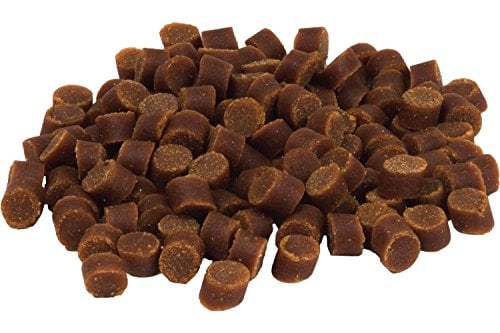Even the most confident dogs will feel nervous sometimes. Fear and anxiety are deeply rooted, automatic responses to real or perceived dangers. These triggers will vary from dog to dog, but might include:
- Loud noises
- Strangers
- Other dogs
- Small children
- Confinement

Should I show affection to a nervous dog?
Dog guardians sometimes get confused about what to do when their dog is acting nervous because they worry that soothing their dog is tantamount to positive reinforcement—and haven’t we learned that positive reinforcement increases the frequency of whatever behavior is being rewarded? In situations of fear and anxiety, the rules are different. Let’s think about it in human terms. If you’re afraid of flying, what’s going to be more helpful: if I tell you matter-of-factly how ridiculous you’re being and how relatively safe it is to fly? Or if I reassure you with soothing words, wine and candy? And if I soothe you and reward you with wine and candy, will you be more or less likely to be fearful during your next flight? The truth is that no one, neither dogs nor humans, want to be nervous and fearful; it’s an unpleasant reaction beyond our control. Your dog is not thinking logically when they’re frightened, so “rewarding” the behavior by showering it with love and soothing doesn’t make your dog think “A-ha! I should act this way more often to get mom’s affection!” How you respond to that fear can make all the difference in how quickly their anxiety dissolves and whether they remain frightened or nervous around that particular trigger in the long run.Tips to soothe a nervous dog
Speak in soothing, quiet tones in a high-pitched register (if possible). Reassure your dog with your words: let them know you are there, they are safe and that everything is going to be okay. Never yell at or scold your dog when they’re nervous or fearful. You will just be adding yourself to the list of things your dog should be frightened of at that moment. If you’re in a nerve-wracking situation together—say you have no choice but to walk past a noisy construction site—walk confidently, speak calmly to your dog and get out of there as quickly as possible.Get those training treats ready!
A mini treat like Zuke’s is handy for training on the go. If you’re walking your dog and they’re willing to take treats, try these two options to give them something positive to focus on: Make a “hand KONG.” Take a handful of treats in your fist. Hold your fingers tightly to your palm but leave a hole (like the opening of a KONG) between your thumb and forefinger, large enough for your dog to be able to lick and access the treats slowly. Hold your hand out for them to lick as you walk by the stressful place or situation. Play the “find it” game. Load up your hand with several treats. As you walk, say “find it” then throw each treat (as if you’re throwing a bowling ball) ahead of your dog one at a time. Try to keep your dog moving from treat to treat instead of stopping to hunt for each one; if they miss one, urge them to move on to the next.
Your body language around a nervous dog
If your dog becomes nervous at home or in another enclosed space, get down low instead of looming over your pet. The bigger you are, especially if you’re bending over into their personal space, the more you are likely to add to their fear. Do not over-handle or hug a fearful dog unless they’re seeking attention from you. Being pet by you may be one of your dog’s favorite things most of the time but if they’re feeling stressed out and fearful, it may cause them to feel trapped or otherwise uncomfortable. A reassuring hand on their back may be a better option than attempting to pick up or snuggle your dog in the moment. On the flipside, if your dog goes to you when they’re feeling nervous (attempting to climb into your lap or hide under your arm, for example), give them the physical comfort they’re seeking.The bottom line
Never force your dog to interact with other people or dogs when they’re nervous. A nervous dog may feel they have to defend themselves from a perceived threat—a response which could result in a bite.

